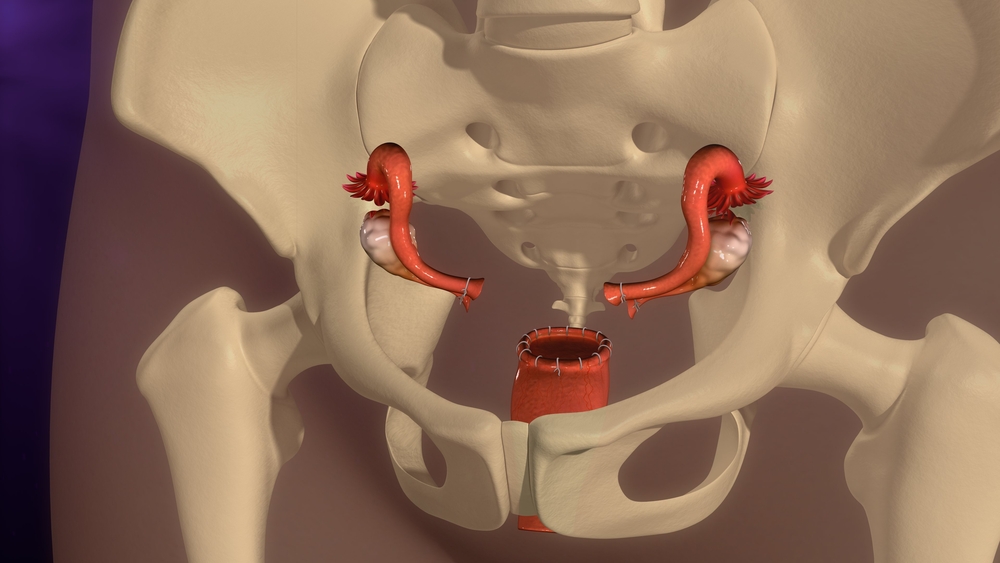The Journey of Sperm After Hysterectomy
For women who undergo a hysterectomy, the surgical removal of the uterus, questions often arise surrounding the fate of sperm. It is essential to understand that a hysterectomy does not directly impact the ability of sperm to be produced; rather, it affects the path it takes after ejaculation.

Following ejaculation, sperm generally travels from the cervix into the uterus, through the fallopian tubes, and eventually reaches the ovaries. However, during a hysterectomy, the uterus is removed, eliminating its role as a route for sperm to reach the fallopian tubes.
Typically, after a hysterectomy, sperm will still be ejaculated, but it won't be able to reach its usual destination. Instead, sperm will likely find an alternate pathway, bypassing the uterus and fallopian tubes altogether.
Alternate Routes for Sperm
The body has its way of redirecting sperm following a hysterectomy. Instead of continuing their journey through the reproductive system, sperm may now be redirected towards other areas in the body.
The most common route for sperm after a hysterectomy is backward into the vagina. From there, it may travel back into the cervix and potentially find its way into the vaginal canal to be expelled.
Alternatively, sperm may find its way into the pelvic cavity, eventually getting absorbed by surrounding tissues. Over time, these sperm cells are broken down and reabsorbed by the body, not causing any harm or noticeable effects.
Effects on Fertility and Pregnancy
A hysterectomy, regardless of where the sperm goes, will impact a woman's reproductive capabilities. Since the uterus plays an essential role in pregnancy, removing it drastically reduces the chances of conceiving and carrying a child.
However, it's crucial to remember that a hysterectomy does not alter the production of eggs or the functionality of the ovaries. Therefore, if a woman retains her ovaries, she may still be able to conceive with the help of assisted reproductive technologies, such as in vitro fertilization (IVF), which bypasses the need for a uterus.
Conclusion
Knowing where sperm goes after a hysterectomy helps shed light on the changes that occur within the female reproductive system following this surgical procedure. The body naturally redirects sperm, either back into the vagina or into the pelvic cavity, ensuring the sperm doesn't cause any harm or complications.
While a hysterectomy significantly impacts fertility and pregnancy, it's essential to consult with a healthcare professional to understand options that may still enable the possibility of conceiving and starting a family.
Related FAQs about where does sperm go after hysterectomy
Where does sperm go after a hysterectomy?
After a hysterectomy, sperm may be redirected backward into the vagina or absorbed by tissues in the pelvic cavity.
Does a hysterectomy affect fertility?
Yes, a hysterectomy can significantly impact fertility since the uterus is essential for pregnancy. However, if the ovaries are retained, assisted reproductive technologies like IVF may still be an option.
Can a woman get pregnant after a hysterectomy?
Generally, no. Without a uterus, it becomes nearly impossible for a woman to conceive and carry a child. However, with the assistance of IVF or a surrogate, biological motherhood may still be possible.
Will sperm cause an infection if it gets absorbed by tissues following a hysterectomy?
No, absorbed sperm cells are broken down and reabsorbed by the body without causing any harm or infection.
Are there any complications from sperm entering the vaginal canal following a hysterectomy?
No, sperm reaching the vaginal canal after a hysterectomy does not generally result in complications. However, it is advisable to consult with a healthcare professional if any concerns arise.
Glossary about where does sperm go after hysterectomy
1. sperm: Sperm refers to the reproductive cells produced by males. It is involved in fertilization and the creation of offspring.
2. hysterectomy: Hysterectomy is a surgical procedure involving the removal of the uterus, typically performed to treat certain medical conditions such as uterine fibroids, endometriosis, or cancer.
3. cervix: The cervix is the lower part of the uterus that connects to the vagina. It serves as the entrance into the uterus.
4. fallopian tubes: The fallopian tubes are a pair of thin tubes connecting the ovaries to the uterus. These tubes enable the transport of eggs from the ovaries to the uterus and provide a site for fertilization to occur.
5. uterus: The uterus, also known as the womb, is a major female reproductive organ in which fertilized eggs implant and develop into a fetus during pregnancy.
6. vagina: The vagina is a muscular canal connecting the external genitals to the cervix. It serves as a passageway for menstrual fluid, receives the penis during sexual intercourse, and provides an outlet for childbirth.
7. pelvic cavity: The pelvic cavity refers to the hollow space within the pelvis, which houses various reproductive and urinary organs, including the uterus, ovaries, bladder, and rectum.
8. fertility: Fertility refers to the ability to conceive and have biological offspring. It indicates the reproductive potential of an individual or a population.
9. pregnancy: Pregnancy is the period during which a fertilized egg develops into an embryo and later a fetus inside a woman's uterus. It typically lasts around nine months, leading to the birth of a baby.
10. in vitro fertilization (IVF): In vitro fertilization (IVF) is a reproductive technology that involves retrieving eggs from the ovaries and fertilizing them with sperm outside the body in a laboratory. The resulting embryo is then transferred to a woman's uterus to establish a pregnancy.
